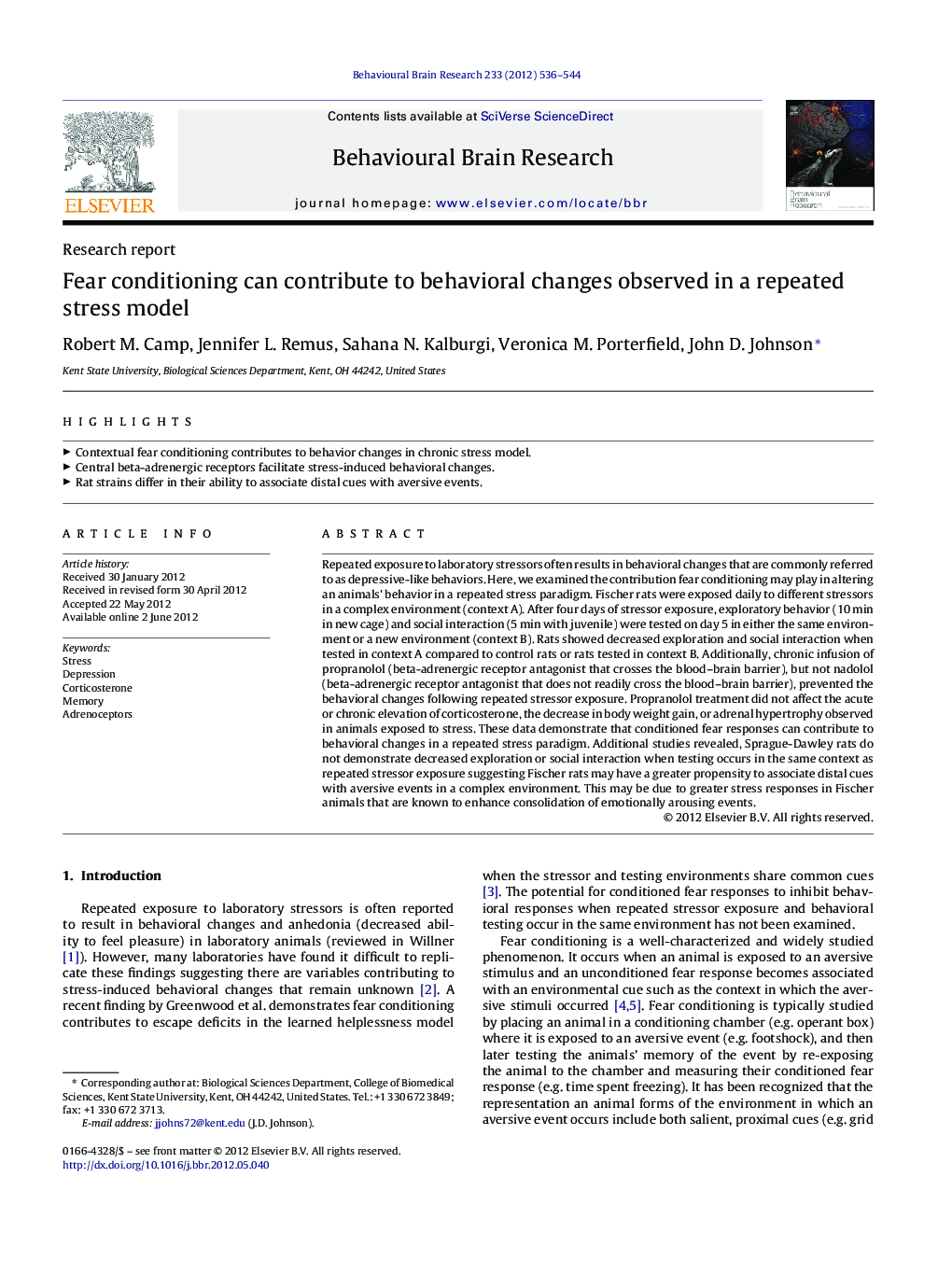| Article ID | Journal | Published Year | Pages | File Type |
|---|---|---|---|---|
| 4313163 | Behavioural Brain Research | 2012 | 9 Pages |
Repeated exposure to laboratory stressors often results in behavioral changes that are commonly referred to as depressive-like behaviors. Here, we examined the contribution fear conditioning may play in altering an animals’ behavior in a repeated stress paradigm. Fischer rats were exposed daily to different stressors in a complex environment (context A). After four days of stressor exposure, exploratory behavior (10 min in new cage) and social interaction (5 min with juvenile) were tested on day 5 in either the same environment or a new environment (context B). Rats showed decreased exploration and social interaction when tested in context A compared to control rats or rats tested in context B. Additionally, chronic infusion of propranolol (beta-adrenergic receptor antagonist that crosses the blood–brain barrier), but not nadolol (beta-adrenergic receptor antagonist that does not readily cross the blood–brain barrier), prevented the behavioral changes following repeated stressor exposure. Propranolol treatment did not affect the acute or chronic elevation of corticosterone, the decrease in body weight gain, or adrenal hypertrophy observed in animals exposed to stress. These data demonstrate that conditioned fear responses can contribute to behavioral changes in a repeated stress paradigm. Additional studies revealed, Sprague-Dawley rats do not demonstrate decreased exploration or social interaction when testing occurs in the same context as repeated stressor exposure suggesting Fischer rats may have a greater propensity to associate distal cues with aversive events in a complex environment. This may be due to greater stress responses in Fischer animals that are known to enhance consolidation of emotionally arousing events.
► Contextual fear conditioning contributes to behavior changes in chronic stress model. ► Central beta-adrenergic receptors facilitate stress-induced behavioral changes. ► Rat strains differ in their ability to associate distal cues with aversive events.
